Hello, friends,
I’m having a few IT problems at the moment so I hope you won’t mind if this week I re-publish a previous blog. It’s about my visit to St Botolph’s and I referred to it in my 300th edition last week.
It starts with an image of this distinguished gentleman …
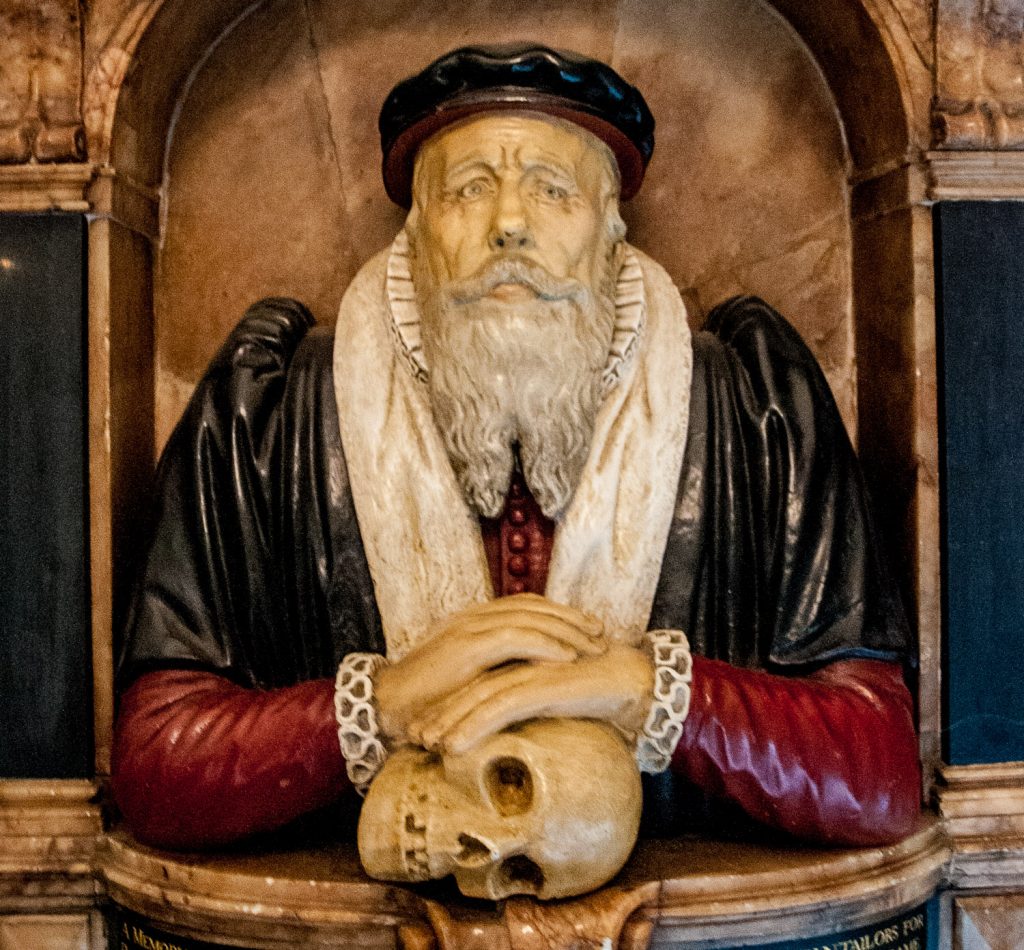
Robert Dow was a Master of the Merchant Taylors and during his life gave away a substantial sum to various charitable establishments. The value of his donations and those receiving the money are listed on his monument …
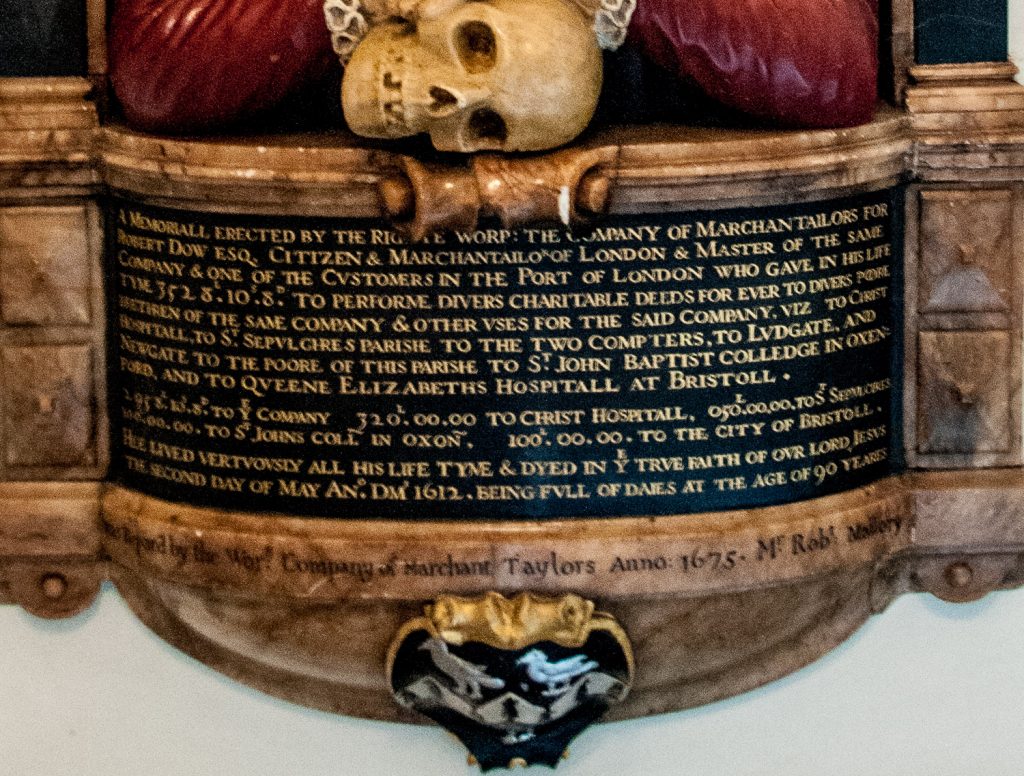
He lived to the great age of 90 and died in 1612. I love the expression that, when he eventually passed away, he was ‘full of days’. The skull his hands are resting on may be to remind us that we too are mortal, even as we relax and enjoy his company and read of his generosity.
Nearby is an eyecatching brown and cream alabaster monument. It commemorates Lord Darcy and Sir Nicholas Carew, both beheaded on Tower Hill for high treason against Henry VIII in 1537 and 1539 respectively …
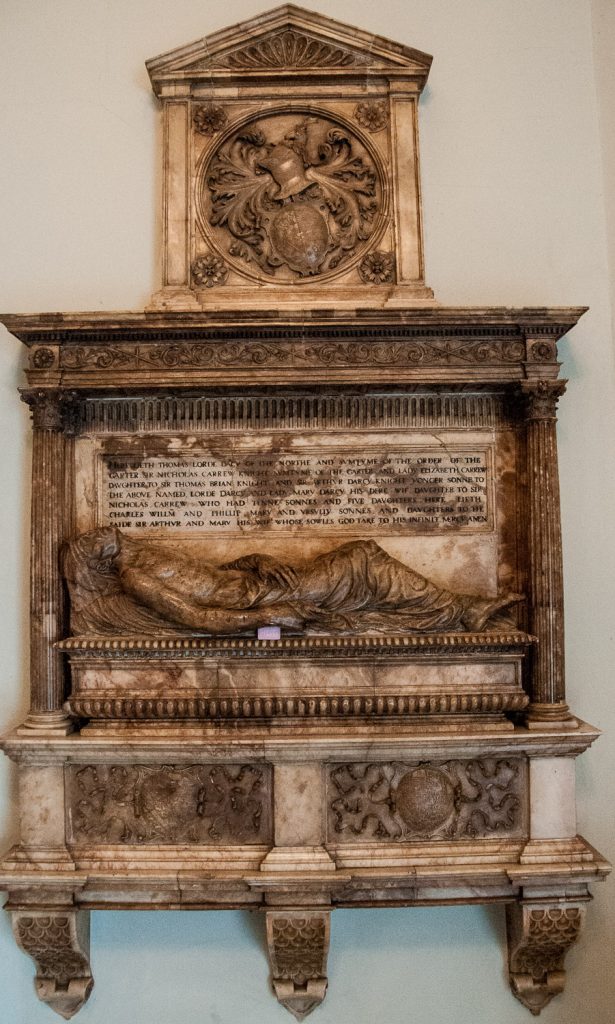
The inscription reads …
Here lyeth Thomas Lord Darcy of the North, and some time of the Order of the Garter. Sir Nicholas Carew Knt. sometime of the Garter. Lady Elizabeth Carew, Daughter to Sir Francis Brian, Knt. And Sir Arthur Darcy Knt. younger Son to the abovenamed Lord Darcy. And Lady Mary his dear Wife, Daughter to Sir Nicholas Carew Knt. who had ten Sons and five Daughters. Here lye Charles, William and Philip, Mary and Ursula, Sons and Daughters to the said Sir Arthur, and Mary his Wife; whose Souls God take to his infinite Mercy. Amen.
More delights await you further inside the church.
This beautifully carved wooden panel depicts King David along with musical instruments …
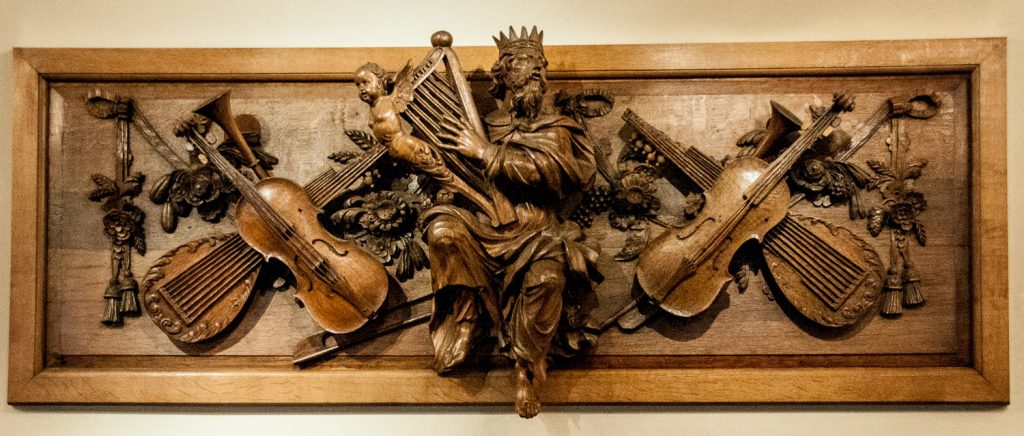
It was created between 1713 and 1715 to grace the front of an organ gallery in the church of St Mary Matfelon, Whitechapel. When the church was destroyed by bombing on the 27th December 1940 the carving was saved and later restored …
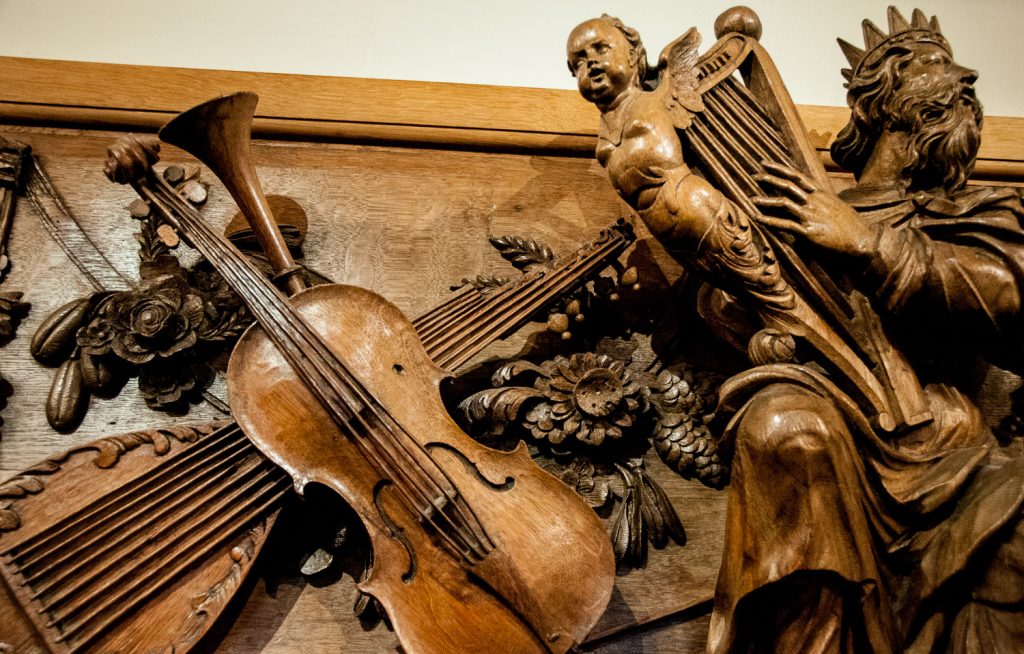
In 1676 Thomas Whiting gifted the organ for the benefit of the ‘hole parrish’ …
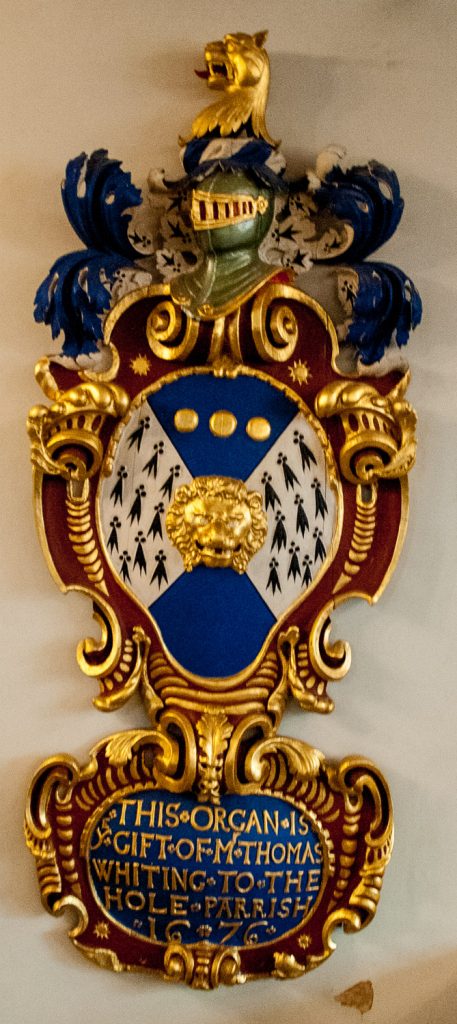
The organ was originally built for his house, which must have been a substantial property to say the least.
There is a fine 18th century sword rest …
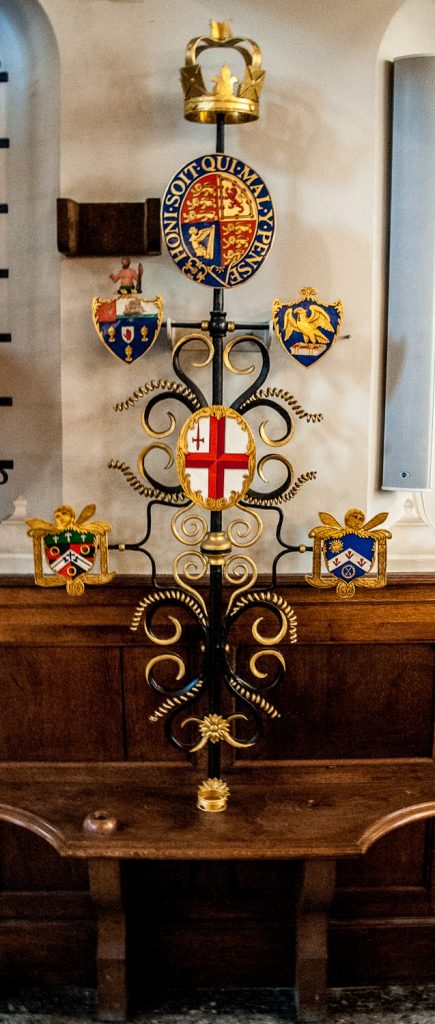
Sword rests (or stands) were originally installed in City churches to hold the Lord Mayor’s sword of state when he used to visit a different church every Sunday, a practice that ceased in 1888 as congregations fell and people moved to the suburbs.
There is a long eulogy to Benjamin Pratt inscribed on a hanging drape …
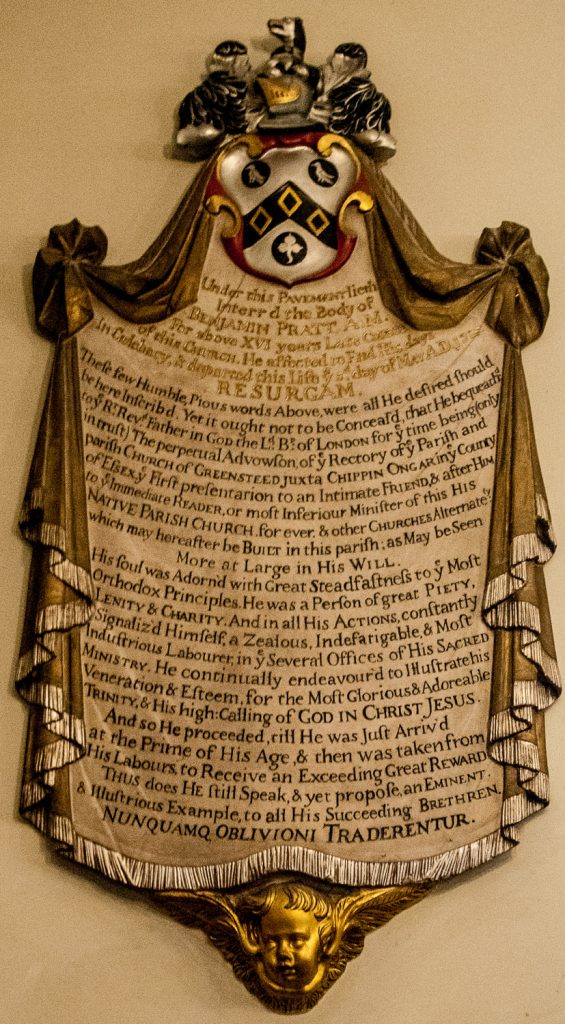
He affected to end his days in celibacy and departed this life on the 3rd day of May 1715 … he had just arriv’d at the prime of his age and was then taken from his labours to receive an exceeding great reward.
And now a memorial that positively demanded more research, an inventor who died ‘in want’ in 1831 and was finally commemorated by a Lord Mayor in 1903 …
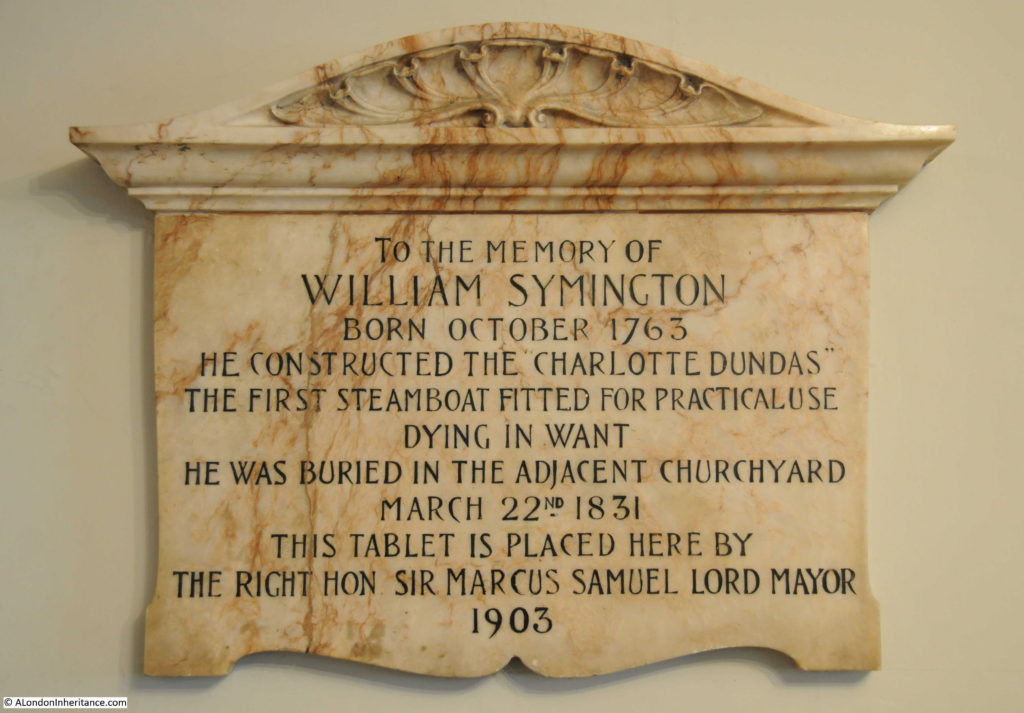
The full story is fascinating and I can’t do it justice in this short blog. To read more go to the London Inheritance blog which you can find here.
A number of past Lord Mayors are commemorated in stained glass …
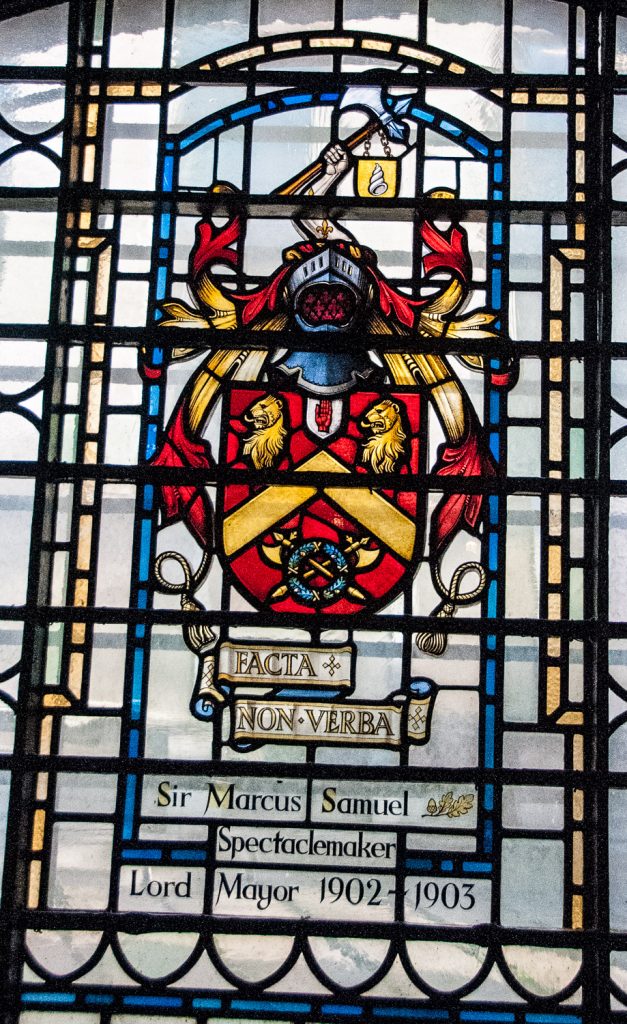
Now leave the church and walk around to the north side where a few gravestones have been placed against the wall.
This one contains an intriguing and poignant inscription to a son and his father …
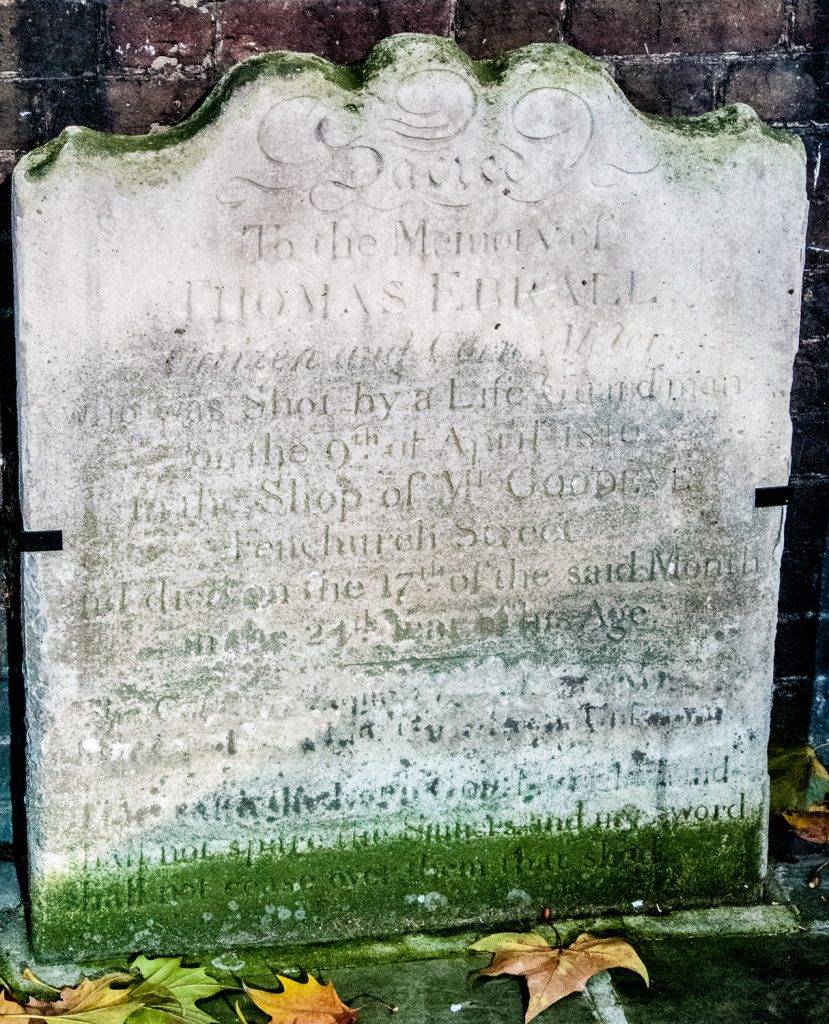
It’s now much worn but, luckily for me, an audit of churchyard inscriptions was made in 1910 and this is what the tombstone tells us …
Sacred to the memory of
THOMAS EBRALL Citizen and Corn Merchant, shot by a Life Guardsman unknown, in the shop of Mr Goodeve, Fenchurch Street, 9 April, 1810 died 17th same month, in his 24th year.
THOMAS EBRALL, his father, died from his loss, 23 August, 1810, aged 48.
‘Died from his loss’, how sad. I have tried to find out more about the incident that resulted in young Mr Ebrall’s death but no luck so far.
The man who conducted the inscription audit at the turn of the last century was one Percy C. Rushen who noticed how they were slowly disappearing due to ‘atmospheric elements’ or ‘sacriligist’ vandalism. Here is a link to his book – my hero!
There is also an unusual water feature resembling a chest tomb …
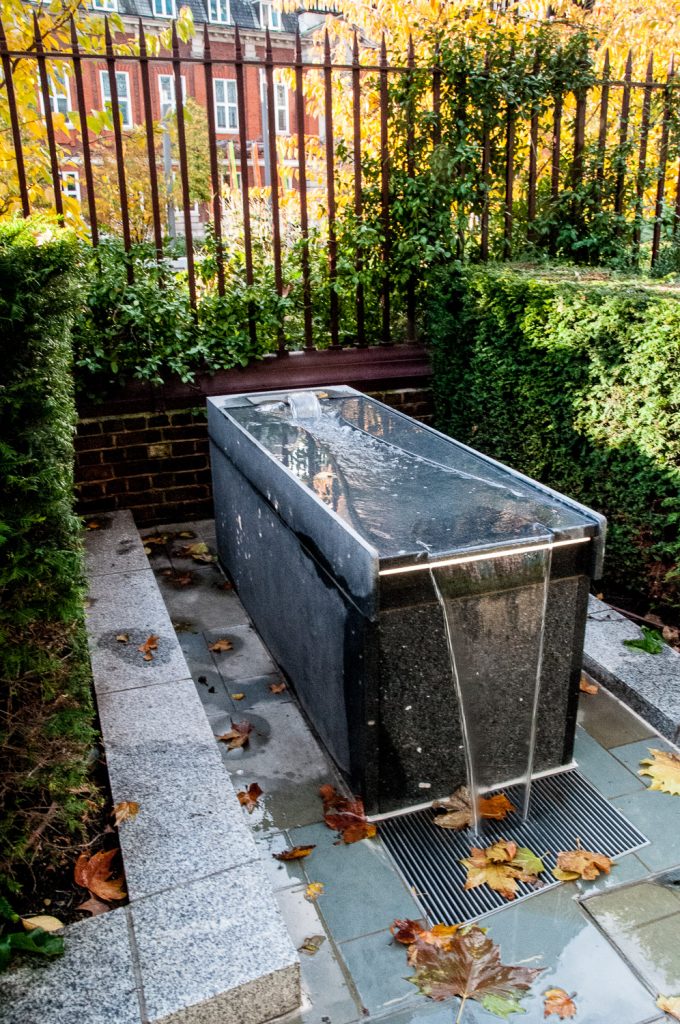
Now cross the road to the Minories and look back …
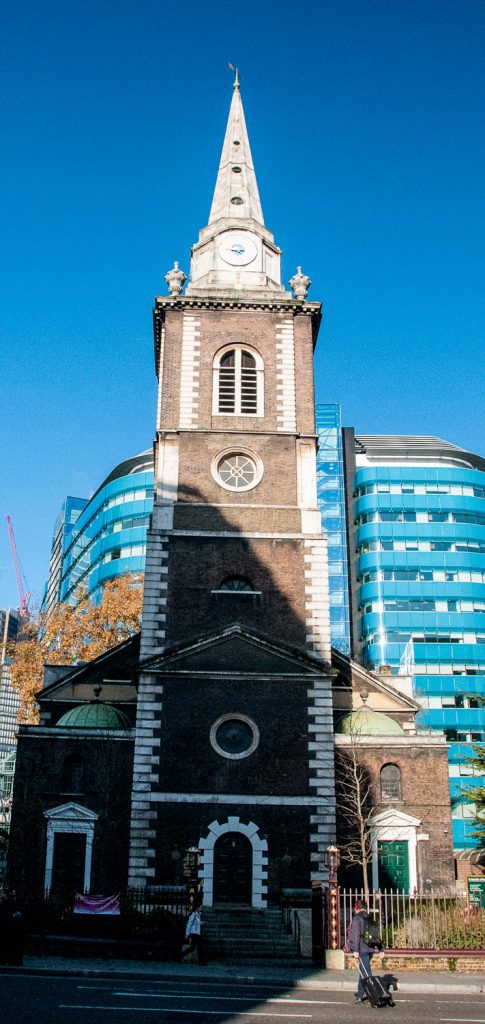
The following drawing from 1740 by its builder, George Dance the Elder, shows the church looking exactly the same as it does today …
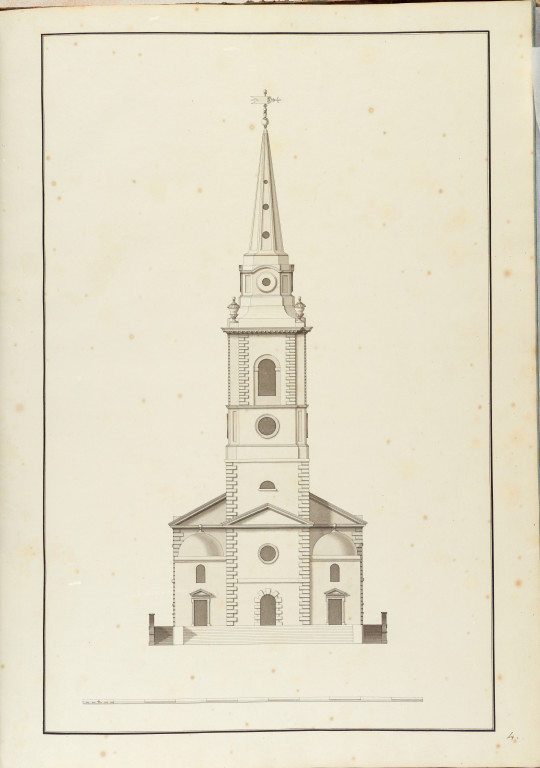
Incidentally, the church had a narrow escape during the Blitz when a bomb fell straight through the roof but failed to explode. The Blitz was an extraordinary period for the Rector of the day, who slept in the Crypt, surrounded by coffins, and climbed onto the roof during air raids to put out incendiary fires.
Do remember that you can follow me on Instagram :
